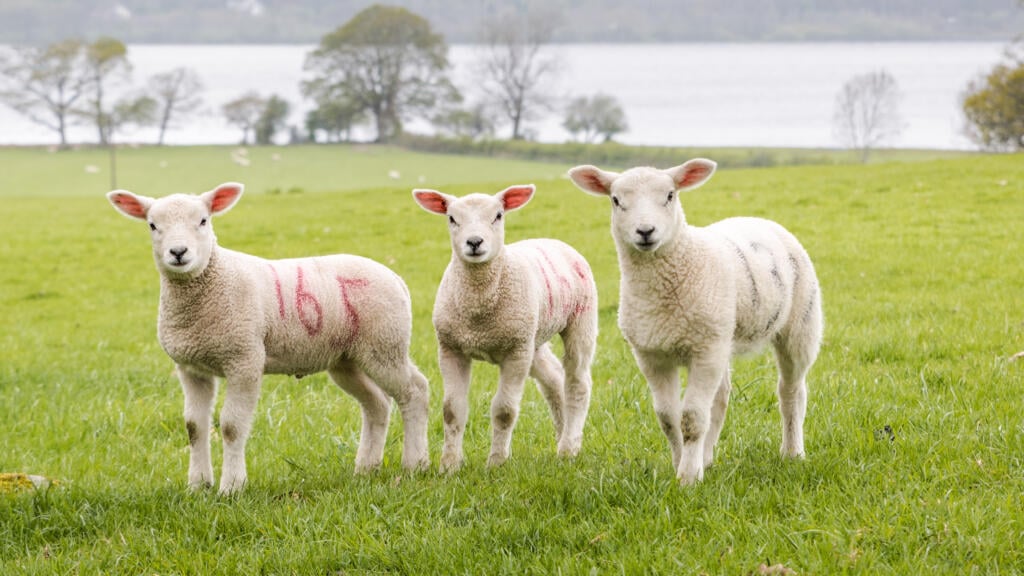
What to do when daffodils finish flowering – with a tip from Alan Titchmarsh
Rosanna Spence
May is a month that’s full of hope and promise where our gardens are concerned. The last of the frost should have passed (unless you’re in Scotland), most plants will be springing into life and temperatures are finally warm enough for long sessions of both gardening and outdoor entertaining.
“In May, the days are longer and warmer,” says horticulturist Sarah Raven, “meaning there is plenty to do in the garden, greenhouse, and kitchen garden. It’s the perfect time to start tidying and cutting back your spring plants, planting flowers and vegetables ready for summer.”
May is a month that’s full of hope and promise where our gardens are concerned. The last of the frost should have passed (unless you’re in Scotland), most plants will be springing into life and temperatures are finally warm enough for long sessions of both gardening and outdoor entertaining.
“In May, the days are longer and warmer,” says horticulturist Sarah Raven, “meaning there is plenty to do in the garden, greenhouse, and kitchen garden. It’s the perfect time to start tidying and cutting back your spring plants, planting flowers and vegetables ready for summer.”
 Credit: Pelargoniums for Europe
Credit: Pelargoniums for EuropeIt’s also a time to remind ourselves of the role that each of us plays in making our green spaces ‘nature positive’. Traditionally, we’ve been a nation of lawn lovers. Yet not mowing the grass – or part of it – can reap huge delights, such as dancing wild flowers that encourage birds, bees and butterflies.
So pop on your gardening pinny, gather your tools and get in tune with these jobs to do in the garden in May…
It’s tempting to cut back and tidy daffodil and tulip leaves once they have bloomed, but it’s best to avert your gaze and live with them for a bit.
“Once your spring bulbs have finished flowering, leave them to die and break down naturally rather than cutting down the foliage,” says Sarah Raven. Read our guide on what to do after daffodils have finished flowering for more tips.
If you have any spent flowers, deadhead to prevent plants from wasting energy creating seed heads. “Add a homemade, liquid fertiliser around the clumps to help encourage strong growth for next spring,” says Sarah. You can make your own liquid fertiliser from your compost heap – known as compost tea – or comfrey tea is a favourite of Raven’s.
 Credit: My Cottage Garden
Credit: My Cottage GardenBefore your daffodils disappear completely for another year, divide them to give you more even colour next spring.
“Lift up the clump with a garden fork and then separate out the bulbs,” instructs RHS horticultural adviser Adrian Thorne. “Spread them out and then replant the bulbs at a depth equal to three times the bulbs height,” he adds.
If some of your daffodils haven’t flowered this year – also known as ‘coming up blind’ – don’t give up on them just yet. Lift the bulbs and replant, adding organic matter and a general-purpose fertiliser. This should give them more of a chance next year.
Many of us now choose to leave late summer and autumn flowering perennials to die back naturally in situ rather than pruning after flowering. Skipping the pruning not only gives the garden shape, texture and interest in the winter months but is good for our beloved birds. One of the jobs to do in the garden in May is prune these perennials that you didn’t prune last year.
“It’s a good time to cut back later-flowering herbaceous perennials,” says Sarah Raven. “Prune about a third of the stems by a third, and another third by two-thirds, and leave the rest.”
This tried and tested method increases the overall flowering season.
 Credit: RHS/Sarah Vivienne
Credit: RHS/Sarah VivienneEmbrace a rare gardening job that involves doing nothing! Simply don’t cut your lawn for a month and watch the wildflowers start to grow.
“If you’re not ready to let the whole lawn grow, then just leave a patch or maybe a strip of grass to grow,” says Thorne. “It really does help attract wildlife into the garden – and they will be doing a good job of keeping down some of the less helpful bugs on our plants.”
You can start mowing again in June, but if you leave it uncut until August each year, you will get a more diverse range of flowers and be on your way to your own personal wildflower meadow.
Sow outdoor cucumber, marrow, squashes and pumpkins individually in 7.5cm (3in) pots. Ensure pots are clean before use, and warm compost in a propagator or leave it for 24 hours in your greenhouse before sowing. The seeds will germinate quickly.
“Continue to prick out and pot on seedlings, gradually increasing the pot by one or two sizes each time until they reach the final pot size or are large enough to ‘harden off’ and transplant,” advises Tom Barry, CEO of Hartley Botanic. “Don’t put a small plant into a big pot and hope that it grows into it. They don’t like big shoes!”
Increase the space between greenhouse plants as they grow to prevent disease. Check plants daily for pests and diseases as you water.
 Credit: RHS/Tim Sandall
Credit: RHS/Tim SandallAs we all know, water from the heavens is increasingly important for us gardeners.
“Tap water is expensive, has a high carbon footprint and is often not ideal for plants,” says RHS horticultural advisor Adrian Thorne. “It’s much better to collect your own rain water before the dry summer periods.”
Install water butts (see our guide to getting free or cheap water-saving kit) and have a glance at the RHS Mains2rains webpage for more tips. Double water storage in small spaces by linking two or more slimline water butts with an overflow pipe.
A simple tip is to just place your pots in saucers and drip trays during the warmer months to catch water and reduce the need for watering.
Recently planted trees and shrubs are rarely able to take care of their own need for water. It can take two to three years for a plant to become established and self-sufficient.
“It may help to visualise the size of the roots when you planted it, and then think how much water is needed to soak right down to the bottom roots,” advises Thorne.
Make sure you water the plant thoroughly and regularly during dry periods. Avoid the ‘little and often’ style of watering which can stress the plant and cause problems.
When it comes to newly-planted roses, “Watch out for particularly prolonged dry spells of two weeks or more, particularly if the weather is warm, and water every two or three days,” says Paul Constantine of David Austin Roses.
Vegetable growers can sometimes find themselves with a glut of a particular veg if they’ve been a little generous with sowing seed.
“Successional sowing is the practice of sowing tranches of seed to allow waves of plants to mature at different times – this avoids gluts and keeps you in veg throughout the season,” says Thorne.
This can also be a handy way to reduce seed losses. Putting all your eggs in one basket, or indeed all your plant seed in one tray, increases the chances of losing it all if something goes wrong.
Sustainable floristry is hot on the lips of all the best floral designers right now, including Royal favourite Shane Connolly. Avoid shop-bought flowers, which are often imported from far-flung locations, and follow Shane’s mantra to “put nature first and let the season be your guide”.
Head to your own garden for single stems that will steal the show in a tall bud vessel. “Alliums are at their peak of flowering in May,” says Raven. “Be sure to cut a few stems for a vase indoors. Adding a drop of vinegar into the flower’s water is a natural way to stop bacteria from building-up and the stem ageing, which otherwise produces a musty odour.”
Read our guide to buying sustainable flowers.
 Credit: Pelargoniums for Europe
Credit: Pelargoniums for EuropeMay is the month for pelargoniums. They get a big thumbs up for their unfailing cheerful colour and are well able to tolerate hot weather, thanks to their South African origins. But they are tender perennials so you will need to cover them or bring them indoors during winter.
We love them best in pots to bring life to a sun-loving patio or balcony. Choose a container that shows off your chosen colour to its best effect; matching, for instance, black pots with black metal furniture.
Try Pelargonium ‘Shrubland Rose’ that will also reward you with scent all the way through the season from now until September or October.
There are so many jobs to do in the garden in May that’ll keep you busy, lift your spirits and prep your outdoor spaces for a happy and healthy summer season. But to finish off, we have a little reminder from the RHS’s Adrian Thorne.
“Don’t forget windowsill plants as one of your plant care jobs in May. Indoor favourites grown in pots have limited access to food resources and so we need to top –up their nutrients to keep them looking healthy. Stop feeding in October when the growing season comes to an end and the need for food is reduced.”
Happy nurturing!
Written by Rhoda Parry
Published: Updated:
Rhoda Parry is the former Editorial Director of Ideal Home, the UK’s best-known media brand, and its sister titles, 25 Beautiful Homes and Style at Home. She is also former Editorial Director for Gardeningetc, Amateur Gardening and Easy Gardens.
As an experienced Interiors and Gardens journalist, she’s spent her career tracking the trends, interviewing the experts and reviewing the best products for inside and outside living spaces. When she’s not writing, she’s tending to her gravel garden that overlooks the sea in Sussex.

Rosanna Spence

Phillipa Cherryson

Rosanna Spence

Rosanna Spence